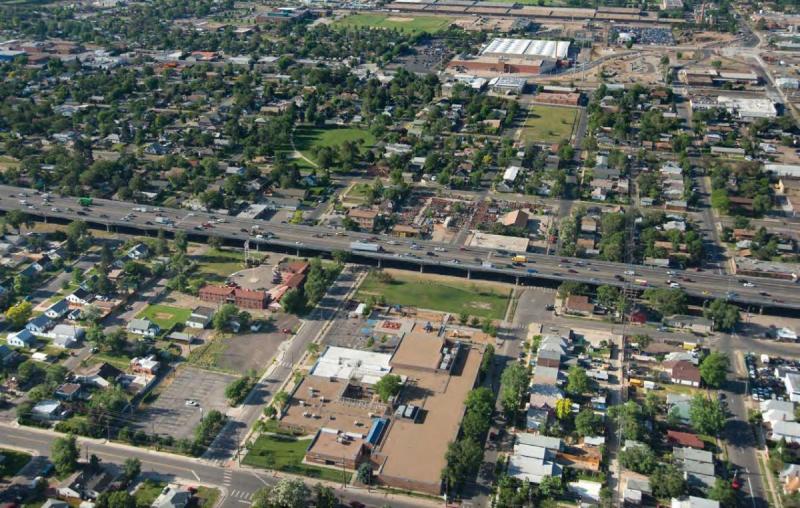I-70 Earns National Notoriety for Blighting Denver Neighborhoods

Tearing down I-70 in north Denver neighborhoods and replacing it with a tree-lined boulevard would help mend the scars created by the freeway in the 1960s. Instead Colorado DOT wants to put a much bigger highway in a trench, making the asphalt scar three times wider than it is today.
That’s why the Congress for New Urbanism included I-70 on its new list of “Freeways Without Futures.”
CNU knows about cities. The nonprofit’s mission is to “create vibrant and walkable cities, towns, and neighborhoods where people have diverse choices for how they live, work, shop, and get around.” I-70 is one of 10 North American freeways that made CNU’s list.
CDOT knows about highways. Its mission with the I-70 project is to rush suburbanites and Utah-bound truck drivers through the low-income, mostly Latino neighborhoods of Elyria, Swansea, and Globeville a few minutes faster (until the highway inevitably fills back up with traffic, which is what happened on I-25).
Here’s more from CNU’s report:
In those historic minority communities, residents were cut off from opportunity, access, and needed services. Now, like many mid-20th Century highways, I-70 in Denver is reaching the end of its life cycle — and one viaduct along its route needs major repairs.
Instead, however, the Colorado Department of Transportation (CDOT) has announced a $1.2 billion plan to tear down the viaduct, bury part of the highway, add four more lanes, and expand toll lanes, shoulders, and service roads. Along the way, the plan would require the state to acquire and demolish 80 residences and 17 businesses — including the neighborhood’s only source to purchase food.
In addition to cramming more cars, traffic, and pollution into the city, the construction process itself would stir up contaminated soil. One CDOT employee and lifelong neighborhood resident came out against the project for that reason, saying he and fellow CDOT employees don’t want to work on it.
CNU refers to the contaminated soil, as well as the road agency’s attempt to greenwash the widening with a tiny park over a portion of the 12-mile-long project:
Under CDOT’s proposal, burying part of the expanded I-70 would involve digging below the water table and into polluted soils. A partial 800-foot grass cover is proposed, which will be isolated between two large frontage roads, creating an isolated “recreation island” inaccessible by pedestrians or bicycle. Moreover, the data used to justify the project is more than a decade old and ignores trends of lower- than-expected motor vehicle use.
As CNU notes, there’s another option that would avoid harming these neighborhoods: Rerouting the highway along I-270, opening up north Denver to more walkable housing and economic development. CDOT is not considering this option.
This article was edited to reflect the fact that the CDOT employee who came out against the project was not an engineer.


